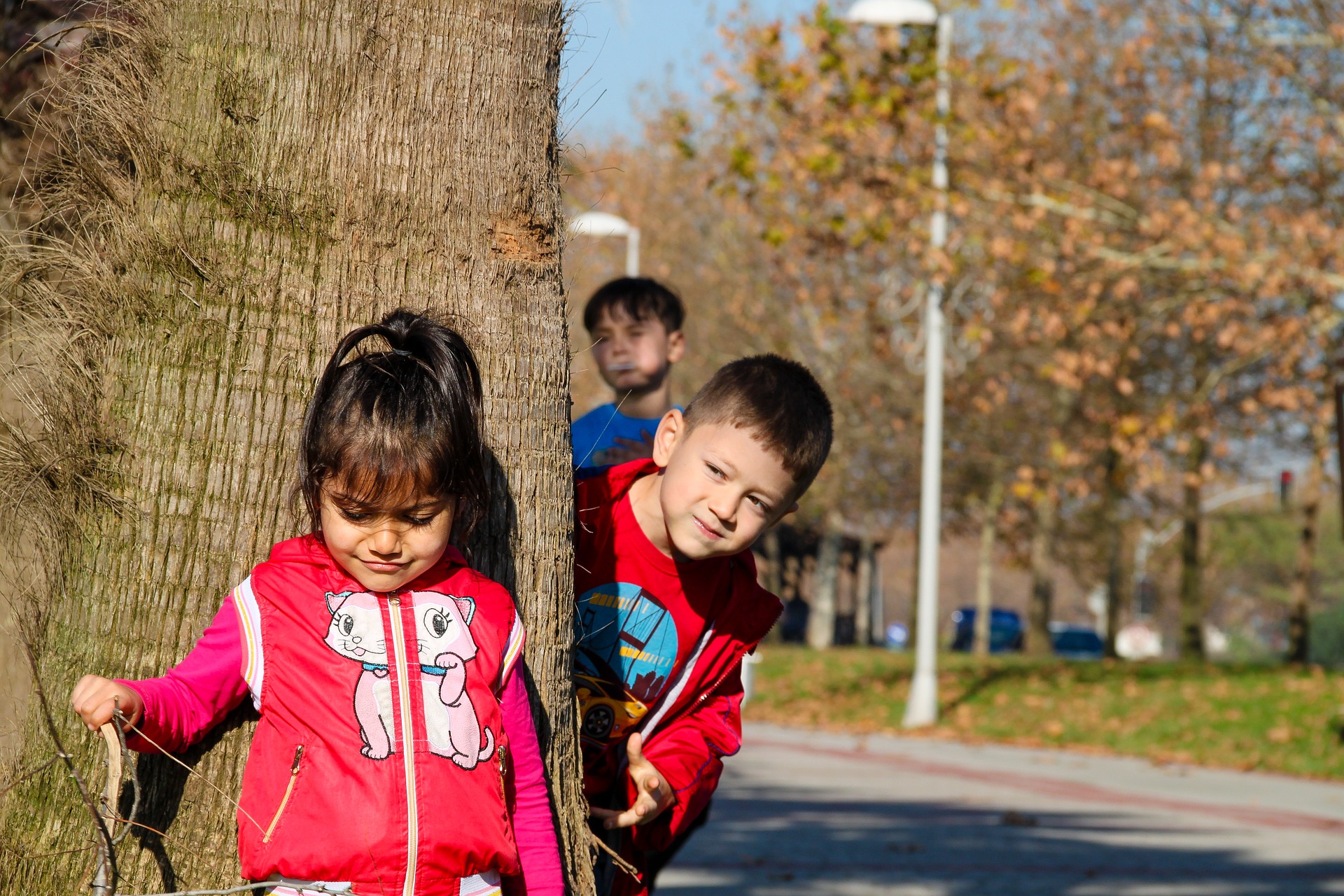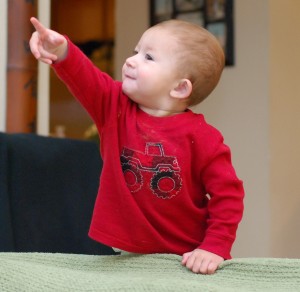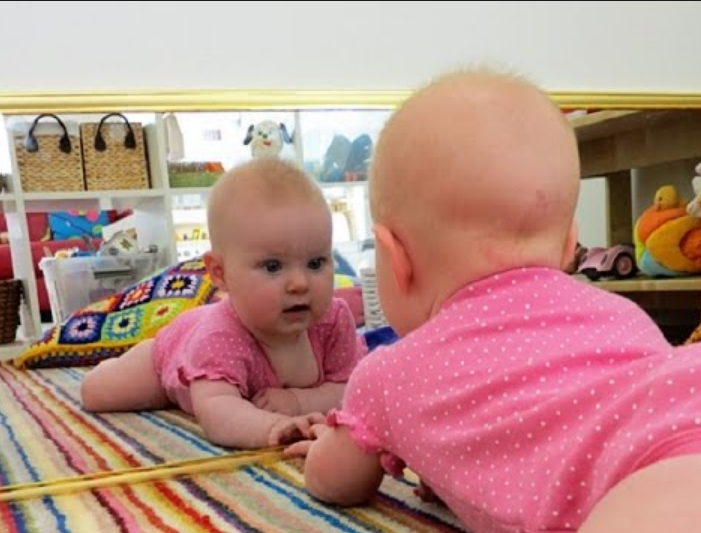Theory of mind and empathy
 One of the signs of cognitive and social development is what psychologists refer to as theory of mind - that is the understanding of private mental states, processes, and knowledge in oneself and others. It is the ability to figure out what a person might believe and predict others' behaviour by inferring a person's motivation.
One of the signs of cognitive and social development is what psychologists refer to as theory of mind - that is the understanding of private mental states, processes, and knowledge in oneself and others. It is the ability to figure out what a person might believe and predict others' behaviour by inferring a person's motivation.
In order to do this, we have to be able to do something like "mind-reading." We have to be able to judge what the other person seems to want and what that person believes to be true.
When we develop theory of mind, we are able to show empathy to others - that is, the ability to identify with the emotions of others.
The importance of theory of mind
Why is theory of mind such an important development? Theory of mind allows us to do the following tasks:
Symbolic play – When children pretend play it involves understanding and re-enacting others’ perspectives - for example, I am pretending to be the teacher. I need to do and say things that the teacher would do.
Deception – Telling a lie or covering up something naughty involves intentionally instilling a false belief in another person’s mind.
Reading comprehension – Theory of mind is needed for readers to make inferences and predictions, and understand characters’ intentions and desires.
Narratives (written or verbal) – Providing narratives involves monitoring and maintaining the listener’s attention, explaining characters’ emotions, thoughts, and actions, and shifting between two characters’ perspectives in the story.
The stages of development
 As children develop, so does their theory of mind. Baron-Cohen (1995) discusses four stages: pre theory of mind, the desire stage of theory of mind, the belief-desire stage of theory of mind and the representational stage of theory of mind.
As children develop, so does their theory of mind. Baron-Cohen (1995) discusses four stages: pre theory of mind, the desire stage of theory of mind, the belief-desire stage of theory of mind and the representational stage of theory of mind.
The "pre-theory of mind" stage is the first year of a child's life. It consists of three key components. First, gaze following. This is when a child follows where someone is looking. This shows that the child is able to follow the attention of another person. Secondly, there is proto-declarative pointing - which is when the child is able to point at the same object of interest as another person. This shows that the child understands what another person is focusing on. And finally, there is "seeing leads to knowing." This is when a child understands that what a person sees, they know. For example, when an adult sees that a cake was put in the fridge, the child knows that the adult knows it's in the fridge. These are all seen as precursors to developing theory of mind.
The desire stage of theory of mind is the ability to detect that someone wants something or wants something to happen. This stage develops between 12 and 24 months, along with language development. When children at this stage are shown a picture of a boy crying and a girl playing with a kitten, they are able to explain why the boy is crying - for example, he wants to play with the kitten, but the girl will not let him. At this stage children begin to empathize with other children; they can understand their feelings and respond appropriately. However, although 2-year-old children can identify mental states in themselves and other people, they assume other people’s behaviour reflects their own desires and beliefs.
Finally, in this stage children begin to understand deception - but they are not very good at it! But at this stage they are often able to keep a secret, knowing that by doing so, someone will be surprised!
The belief-desire stage of theory of mind, which begins around three years of age, is when children are able to make mental representations of the world. At this stage, children understand that people have beliefs as well as desires that may be different from their own.
Research in psychology: Repacholi and Gopnik (1997)
 Repacholi and Gopnik (1997) wanted to get a better understanding of when children are able to understand that other people may have a belief or desire that is different from their own. To do this, they carried out a very simple test based on what people like to eat.
Repacholi and Gopnik (1997) wanted to get a better understanding of when children are able to understand that other people may have a belief or desire that is different from their own. To do this, they carried out a very simple test based on what people like to eat.
The sample was made up of children aged 14 and 18 months. Children were presented with two bowls of snacks. In one bowl there were Goldfish crackers. In the other bowl - raw broccoli. The children watched as the researcher showed signs of disgust when eating the crackers, and signs of delight when eating the broccoli. The researcher then asked the child to give them something to eat.
The 14-month-olds responded egocentrically, offering whichever food they themselves preferred - which was usually the Goldfish crackers. However, 18-month-olds correctly inferred that the experimenter wanted the food associated with a positive response - in this case, to broccoli. They were able to make this inference even when the experimenter's desires differed from their own.
The children not only inferred that another person held a desire but also recognized how desires are related to emotions. This study shows that perhaps children develop the belief-desire stage of theory of mind earlier than previously thought.
You can watch the film below to see Alison Gopnik explain her research and go a bit deeper into what young children are able to understand the thoughts and beliefs of others.
The final stage, the representational stage of theory of mind, begins at around four years of age. At this stage, children are interacting more directly with other children in play activities. At this stage, they understand that a person's beliefs may be false. This is also the stage where children realize that what they see and know may not be what others see and know.
One of the ways that this stage is tested is through false belief testing. Baron-Cohen et al (1985) had children listen to the following story - known as the Sally-Anne task.
The Sally-Anne Task
In the Sally-Anne task, children are read the following story while looking at images that reflect the plot of the story.
Sally has a basket. Anne has a box.
Sally has a marble. She puts the marble into her basket.
Sally goes out for a walk.
Anne takes the marble out of the basket and puts it into the box.
Now Sally comes back. She wants to play with her marble.
Where will Sally look for her marble?
When giving this task, the researcher asked the children three questions. First, Where will Sally look for her marble? This question tests the child's understanding of Sally's beliefs. The second question is Where is the marble? This question determines if the child actually understood the story. The final question was Where was the marble in the beginning? This is to test the child's memory.
Baron-Cohen found that all 27 of the children, ages 3.5 to 5.9 years old, were able to answer the second and third questions. It was the children under four years old who were not able to correctly answer the first question.
The following video is another example of a false belief test.
Three-year-olds do not remember that their own belief has changed. If the candles are put back in the box and they are asked what they thought was inside before opening it, they’ll say “candles” not “crayons” but 4-year-olds remember they thought it was crayons. By the age of 4 or 5 years, children realize that people talk and act on the basis of the way they think the world is, even when their thoughts do not reflect the real situation, and so they will not be surprised if their friend looks for crayons in the box they know has candles inside.
The false belief tests have been criticized for perhaps having language which is confusing to the children. Siegal and Beattie (1991) replicated the study by Baron-Cohen but with one minor change. Instead of asking children Where will Sally look for her marble?, the researchers asked Where will Sally first look for her marble? When they made this change, they found that 70% of the children under four years old were able to answer the question.
Explanations of theory of mind
How is it that children are able to "learn" to empathize and understand how someone thinks? In the study of theory of mind there are two schools of thought. One is known as "theory theory" and the other as "simulation theory".
Theory theory argues that children observe the world, and in doing so, gather data about how the world works. Remember, Piaget said that children are "active scientists." As they accumulate data about the world around them, they develop schema that help them make predictions about other people's behaviour.
An essential component of theory theory is the development of meta-representations - that is, that children are able to use symbols to represent something "real." For example, they can use a banana as a phone. Theory of mind develops as they start to understand how others also use symbols. So, when a child sees two children playing cops and robbers and shooting bananas, he understands what is happening. This ability to create, manipulate and transfer meta-representations is the basis for the development of theory of mind.
Simulation theory argues that we are biologically designed to understand other people. In order to do this, we use our own mind as a model for understanding the minds of others. Unlike theory theory which argues that we need to learn about other people's mental representations, simulation theory argues that we understand others by comparing them to ourselves. Simulation theorists have been boosted by the discovering of mirror neurons - neurons that are activated by observing someone carrying out a behaviour. For example, when I watch someone eat a cookie, my brain responds as if I were in fact carrying out the action. Simulation theorists argue that mirror neurons are what enable us to develop a sense of empathy.
As is typical in psychology when we have to dichotomous positions, it is most likely that theory of mind is the result of both of these factors.
Research in psychology: Carr et al (2003)
 One of the ways that people learn is by observing others and then imitating their behaviour. Recent research has shown that special neurons, called mirror neurons, may play a vital role in the ability to learn from - as well as empathize with - another person.
One of the ways that people learn is by observing others and then imitating their behaviour. Recent research has shown that special neurons, called mirror neurons, may play a vital role in the ability to learn from - as well as empathize with - another person.
A mirror neuron is a neuron that fires when a person performs an action or when a person observes somebody else perform the same action. The mirror neuron is so-called because it “mirrors” the behaviour of another.
Carr et al (2003) asked participants to look at human faces while undergoing an fMRI. The aim of the study was to see if simply looking at the emotion expressed on someone’s face would cause the brain of the observer to be stimulated.
First, the participants had to imitate the faces they were shown, and then they had to simply watch as they were shown the faces again. The findings found that not only were the same areas of the brain activated in both cases, but it became clear that the limbic system was also stimulated - observing a happy face activated pleasure centres in the brain.
Researchers have been looking at mirror neurons as a way to explain empathy for others. Mirror neurons appear to play a role in how people react to sports, theatre, and video games. It appears that when we see a football player crushed by an opponent, we “feel” the contact of the hit thanks to our mirror neurons. Researchers believe that mirror neurons have evolved to make us capable of understanding and interacting with fellow human beings. The study of mirror neurons is still in its infancy, but initial research appears very promising.
Checking for understanding
Which of the following is not one of the precursors of theory of mind seen in the "pre theory of mind stage?"
At which stage of theory of mind do psychologists believe that children are able to understand that people have different desires than their own?
What is one limitation of Baron-Cohen's (1985) Sally-Anne task?
At what age did Baron-Cohen find that children could correctly answer the Sally-Anne task?
Theory theory argues that

 IB Docs (2) Team
IB Docs (2) Team
